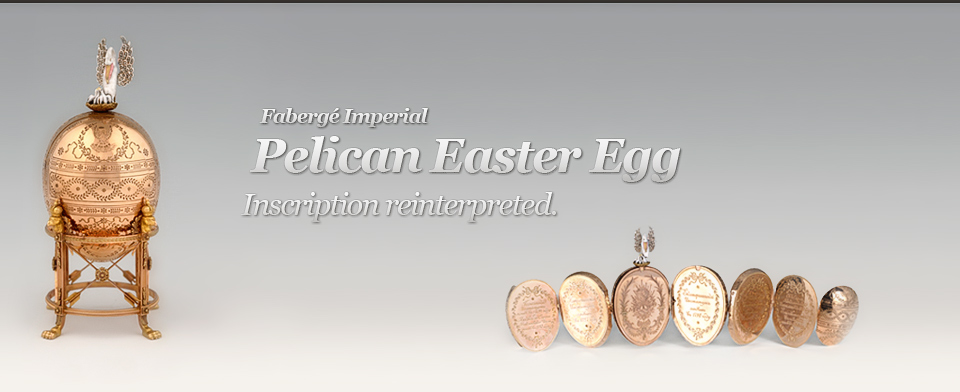Fabergé Revisited
Carl Fabergé's commemorative Imperial Pelican Easter Egg, dedicated to the 100th anniversary of the Offices of royal charity overseen by Empress Maria in 1897[1], currently in the Collection of the Virginia Museum of Fine Arts in Richmond, is one of only few of his masterpieces bearing messages in the Old Slavonic style.
The two inscriptions on the Egg were historically understood as a single sentence with a vague Biblical meaning. The correct reading of the inscriptions is that they are in fact two distinct direct quotations from the Bible that served as the mottos in the Offices at that time.
The new translation helps to better understand the way of thought, design, and the historical importance of the artwork of the "Great Fabergé" as Mikhail Piotrovsky, Director of the State Hermitage Museum in St Petersburg, affectionately calls him!
We are indebted to Elena Lioubimova for having deciphered the messages and shed some new light on inscriptions that had remained esoteric for over a century.
We would also like to express our admiration to Lillian Pratt's noble intention to acquire objects of the Russian Imperial heritage as an act of appreciation of the House of Romanov's educational and charitable activities.
Without her acquisition and bequest to the VMFA the message on the Imperial Pelican Egg might have been lost forever!
